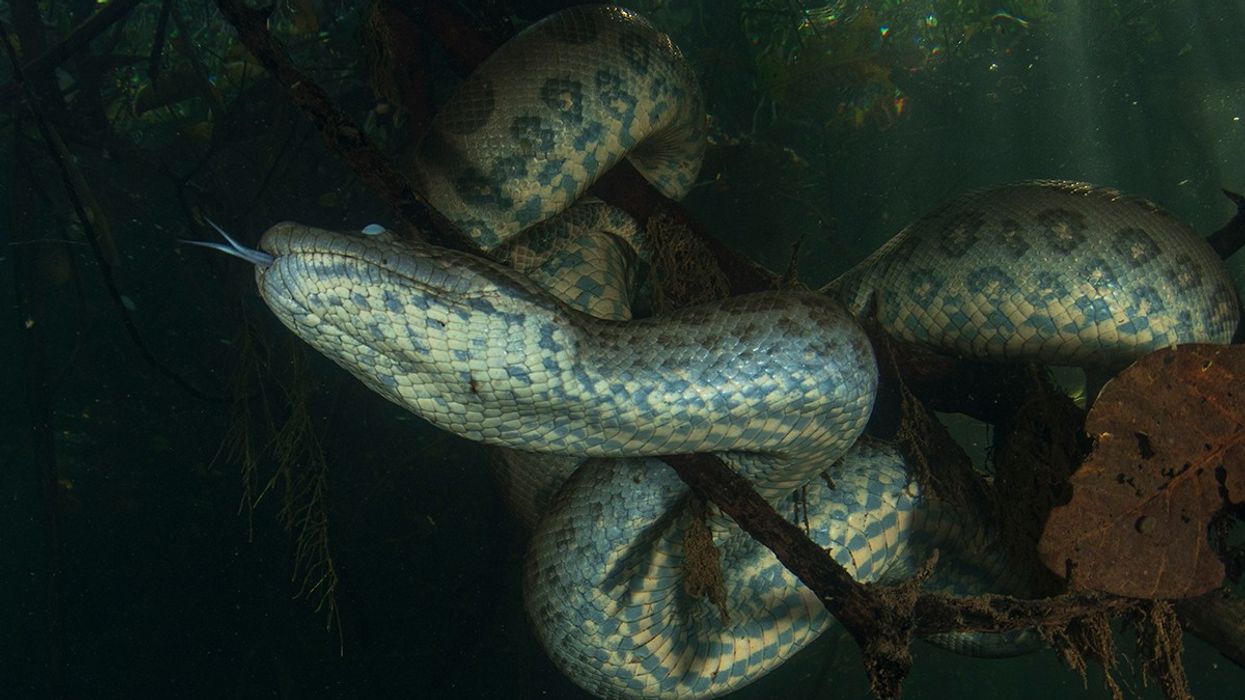'Incredible!' World's biggest snake found 'lurking in the shadows' in the heart of the Amazon rainforest

Scientistis have discovered the world's biggest snake in the heart of the Amazon rainforest
|Getty Images

The snake species was found during filming for National Geographic’s Disney+ series Pole to Pole with Will Smith
Don't Miss
Most Read
Scientists have discovered the world's biggest snake in the heart of the Amazon rainforest.
The remarkable species can grow up to 7.5m and weighs close to 500kg, making it the largest and heaviest snake known to man.
Until now, the green anaconda took the top spot. The boa species, found predominately in South America, can come in at 20-feet long and weigh up to 550 pounds.
These anacondas often move faster than their prey and use their strong bodies to suffocate and swallow them whole.

The remarkable species can grow up to 7.5m and weighs close to 500kg
|Getty Images
Now, a decades-long study has found that there is not one but two species of green anaconda - and the latter dwarfs the former.
Researchers working with the indigenous Waorani people captured and studied several specimens of the newly named northern green anaconda (Eunectes akayima) in the Bameno region of Baihuaeri Waorani Territory in the Ecuadorian Amazon.
The species was found during filming for National Geographic’s Disney+ series Pole to Pole with Will Smith.
Scientists documented several anacondas belonging to the new species “lurking in the shallows, lying in wait for prey” as they canoed down the Amazonian river system.
“The size of these magnificent creatures was incredible – one female anaconda we encountered measured an astounding 6.3 metres long,” study co-author Bryan Fry from the University of Queensland said in a statement.
“There are anecdotal reports from the Waorani people of other anacondas in the area measuring more than 7.5 metres long and weighing around 500 kilograms,” Dr Fry said.
The new species, described in the journal Diversity, diverged from the previously known southern green anaconda about 10 million years ago, differing genetically from it by 5.5 percent.
To put this jump into perspective, humans differ from chimpanzees by only about two percent.
LATEST DEVELOPMENTS

Climate change poses an existential threat to anacondas, scientists warn
|Getty Images
Researchers say the finding is essential to the conservation of anacondas, which are incredibly important to their local ecosystem and very sensitive to changes in the climate.
“So knowing which anaconda species exist, and monitoring their numbers, is crucial,” researchers wrote in The Conversation.
And this effort is becoming more urgent than ever as the threat of climate change grows.
“Of particular urgency is research into how petrochemicals from oil spills are affecting the fertility and reproductive biology of these rare snakes,” Dr Fry said.










